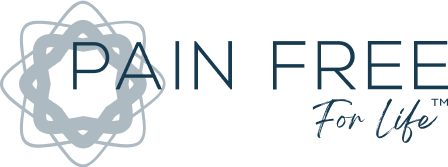
“Chronic pain warrior,” “fighting the battle with chronic pain,” “a weapon against chronic pain,” “be strong you can beat this,” “keep fighting.” Does this sound all too familiar?
How does this kind of language make you feel? Stressed, anxious, on guard, empowered?
Using combative language to talk about our health can cause us to slip in to fight or flight mode—and if you’ve been reading The Pain Free for Life Blog, you know by now it’s nearly impossible to heal when your body is in a sympathetic state (fight or flight).
Today we’re talking about words and how they positively affect healing vs. inhibit healing. The fact is our words matter. They shape our reality and function as a lens through which we see the world around us. Which lens would you rather gaze through? One of the battles won or lost? Or one of nurturing acceptance, patience, humility, and encouragement?
Here’s the thing: chronic illness isn’t black and white. It’s not something to either win or lose.
Ultimately how you frame your journey with chronic illness or pain starts with how you perceive your experience with it. And how you perceive this reality will eventually affect how you heal and move on to a life that isn’t ruled by illness and pain.
The Battle or the Journey—Which Path Will You Take?
Looking at a chronic health condition like a war to be won can empower some people, but for others, it can prime them for a feeling of failure. Why? Because a chronic health condition is just that—chronic. Many of the conditions we talk about in our blog don’t have simple one-size-fits-all solutions. For most, it will take time, focus, and perseverance to start feeling better again.
A battle is typically quick, vicious and results in a winner and loser. A journey is more abstract. It will consist of a series of events that accumulate in an eventual result or go on in perpetuity. The beauty of the journey is there is always an opportunity to keep going no matter what challenges may arise.
Picking the journey over the battle looks like this:
- Embracing the things (or people) that empower you
- Releasing the things (or people) who diminish or drain you
- Expressing gratitude towards your body—even on hard days
- Saying words of affirmation that promote healing (more on that later)
- Acknowledging that there WILL be stumbling blocks and setbacks along the way
- Staying focused on your goal of curating a life that promotes healing and wellness
- Not giving up—but resting— when you feel defeated or drained
- Pivoting when treatments or situations aren’t working for you
- Being open-minded to innovative approaches to healing
- Accepting that there may not be an “end date” to your healing
- Practicing self-love and self-compassion EVERY DAY
“Managing” Chronic Pain Vs. “Fighting” it
When you think about “fighting” chronic pain, what comes to mind? For many of us, that looks like fighting against our own bodies. Your body is not your enemy. It’s not something to be conquered or dominated.
“Managing” chronic pain and illness looks more like working with your body to find out what makes it feel comfortable, safe, taken care of, and nurtured. Whether it be a special diet, trying new stretches or exercises, adopting a new mindset, or trying a new treatment like microcurrent therapy, managing is a collaboration between your body and mind.
In fact, many of the aspects of “managing” your health are evident in the five pillars of The Hache Protocol for Pain Resolution™ (stress reduction, nutrition, fitness, sleep, and microcurrent therapy.)
The bottom line is this: how you talk about and frame your experience with chronic pain and illness will set the stage for how you approach healing from it. We understand that some people gain encouragement from talking about their healing journey as a battle, war, or fight—and that’s totally okay! We just want to inspire you to consider the power of positive thinking and affirmations as well.
Words Matter—How Language Affects Vs. Inhibits Healing
Let’s explore the power of positive thinking vs. negative thinking and how affirmations can help reframe how you see your chronic pain and/or illness.
We’ve previously discussed the importance of neuroplasticity or our brains’ ability to adjust and restructure at any stage of life. The brain is designed to create new neural connections and enhance neural pathways to adjust to new situations.
The fantastic thing about positive thinking and affirmations is that they can actually rewire your brain to become more resilient, stronger, and more geared toward healing. This is because our brains operate on what information we give them.
And this concept is backed by science. Johns Hopkins expert Lisa R. Yanek, M.P.H. examined the power of positive thinking in people with a family history of heart disease. She found that people who had a positive outlook were a third less likely to have a heart attack or other cardiovascular problems within five to 25 years than those who had a more negative outlook.
Regarding our health conditions in a more positive and less combative way can help build connections in our brain that counteract damage and injury.
What to do When You’re Sick of Being Sick
It can be frustrating and defeating when you feel like a chronic health condition has essentially hijacked your entire life. We often hear our patients describing this feeling as “sick of being sick.”
Too many chronic pain patients spend months, years, or even decades trying to figure out what’s going on with them due to doc blocking and other factors. Then when they finally receive a diagnosis—the one thing they’ve been yearning for—it can be bittersweet.
Look at Your Healing Journey as a Rebirth

You may experience a feeling of grief for the life you once had when finally receiving a diagnosis for a chronic health condition like CRPS, lupus, rheumatoid arthritis, migraines, type 1 diabetes, or Hashimoto’s disease. For some people, this period can symbolize the “death” of who you once were. We suggest you look at this part of the healing journey as a “rebirth” instead.
You are still the same person you were before. You may have gained some wisdom, grace, humility, and appreciation along the way, but at your core, you are still you. Each step you take towards identifying your body’s needs and what makes you feel your best is an opportunity to celebrate and be thankful.
When we focus on gratitude and acceptance and look at our healing as a journey—not a battle to be won—we then can approach it with realistic and attainable expectations.
Think back to the classic film The Wizard of Oz. Dorothy’s journey is fraught with unexpected challenges and roadblocks, yet she commits herself to the experience, staying open-minded—yielding herself to the experience. Eventually, she gets home but is no longer the same girl she once was.
She has evolved and now approaches life with a renewed appreciation for what she once took for granted. Dorothy is “reborn” when she awakes back in Kansas, and it is evident to the viewer that her real journey has only just begun—there is still much to accomplish. That opportunity to keep evolving is a gift.
Healing Affirmations for Chronic Pain and Illness
It’s now time to put the power of language and positive thinking into action. Try some of these positive affirmations for healing each morning to set the intention of a collaborative healing experience between your mind and body. Some people find it helpful to gaze into the mirror when saying positive affirmations. It helps them connect with themselves and establish self-love.
These affirmations are powerful because they can help you transition out of a sympathetic state (fight or flight) and into a parasympathetic state—the ideal environment for healing. They also create a more positive and helpful narrative in your mind about what healing looks like, feels like, and means.
- I know that my attitude is simply thought with an attached emotion. I have the power and ability to manifest it in a positive way.
- Each day I am stronger than the day before.
- I choose to heal.
- I choose to release pain and embrace healing.
- My body is powerful and capable of healing.
- I will not let my illness or pain define me.
- I am so much more than my pain.
- I am releasing pain and illness from my body.
- I welcome healing and vitality.
- I will create an environment that encourages healing in my body.
- I will listen to and nurture my body.
- I am committed to my healing journey and will strive to improve mentally and physically.
- I release pain, illness, and negativity from my body and mind.
- My body is capable of perfect harmony and balance.
- I deserve to live the life I love.
- I am open to embracing and supporting others in my goal of healing.
- I can take one small step every day and will rest when I’m weary.
- My healing potential is infinite.
Help is Here—Every Step of the Journey
If you’re looking to connect with others who have embarked on their own healing journeys, we recommend you join our free Pain Free for Life Support Group on Facebook. In it, you can share what positive affirmations uplift you in troubling times and reach out for support whenever you need it. We can’t wait to have you join us!





